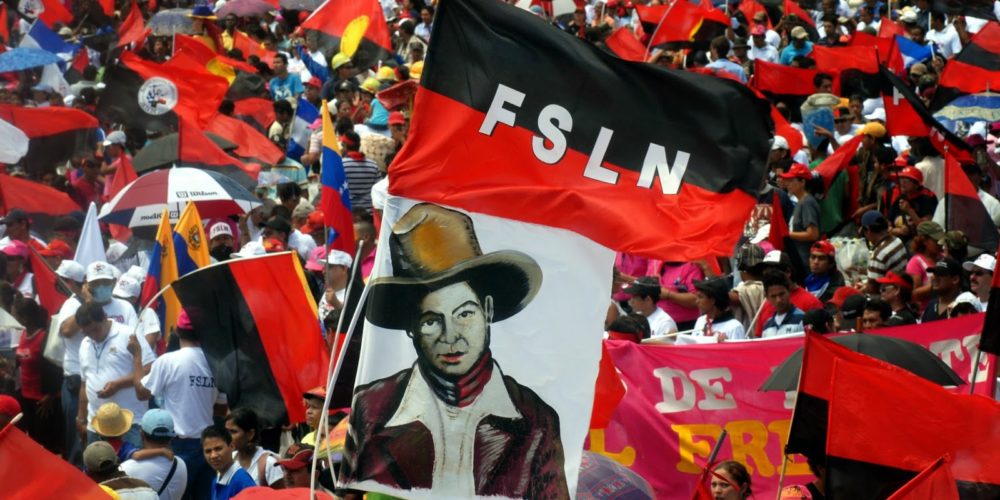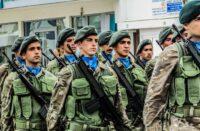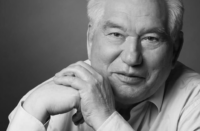On 19 July the president of Nicaragua, Daniel Ortega, addressed hundreds of thousands of Sandinista supporters at a mass rally in Managua. The event was held to celebrate forty years of the Sandinista revolution as well as to show popular support for the government in the wake of the attempted coup in 2018.
The size of the crowd, in a country of 6 million people, clearly shows that the Sandinistas retain popular support; and they are justly proud of their achievements.
The Somoza dictatorship ruled for nearly fifty years, at the behest of the United States, with the National Guard (established by the United States) striking fear into the people. Since the murder of the revolutionary leader Augusto Sandino in 1934 the Somoza dynasty took advantage of the divided bourgeoisie, in Central America’s least densely populated country, to earn a significant amount of private wealth for the Somoza family. The country had a poor infrastructure, and its weak capitalist class survived only through the exporting of coffee to the United States—much as the Cuban capitalists relied on the export of sugar.
In 1961 Carlos Fonseca, Tomás Borge and Silvio Mayorga founded the Sandinista Front of National Liberation (FSLN) in neighbouring Honduras. While the organisation was influenced by revolutionary movements abroad, especially in Cuba, it was first and foremost a Nicaraguan organisation, based on the concrete conditions in that country.
The fact that the Somozas had such immense personal wealth, and that the capitalist class remained weak and divided, without strong leadership, led to a tactical alliance with sections of capital that were opposed to Somoza. The lack of industry and very weak organised labour meant that the working class was not strong enough to rule on its own. For the Sandinistas, attacking the Somocistas was attacking the ruling class of their country, hitting the strategic weak point of imperialism.
After the devastating earthquake in 1972 that destroyed most of Managua, combined with the actions of Somoza’s National Guard in looting all round them, the demand for a popular uprising against the dictatorship had grown. After several years of guerrilla war, which included brutal reprisals by the regime—backed by the United States and Israel—in 1979 the Sandinistas triumphed.
During those years the support of the FSLN among the people had grown, with the famous Masaya retreat showing its organisational ability: on hearing of a planned attack by the regime the Sandinistas succeeded in evacuating thousands of combatants and civilians from Managua to Masaya, twelve hours away.
Mass mobilisations of the poor, of women, young people and others throughout the country led to such progressive measures as health and education schemes, the rebuilding of destroyed areas, literacy campaigns, and the nationalising of property formerly belonging to the Somoza dynasty.
Before the revolution a mere 27,000 workers were in trade unions; within three years this had grown to 150,000, an example of the massive growth in the power of workers during the revolution. The Sandinistas were the people, and the people were the Sandinistas.
Almost immediately the United States tried to overthrow the new government. It backed conservative sections who had worked with the FSLN against the regime but were now worried about the radical policies being taken. The strategies of “soft war” resulted in the establishment in the United States of such groups as the National Endowment for Democracy and other “human rights” groups whose job was to portray the Sandinistas as brutal dictators and their opponents as cuddly liberals.
The more overt measures included the United States giving open support to the notorious Contrarrevolucionarios (counter-revolutionaries) or Contras, right-wing terrorists and criminals, who murdered and raped across the country, bombed hospitals and schools, and sold drugs to raise money. The struggle against the Contras would cost more than 30,000 lives and would destroy the country economically.
International solidarity poured in for Nicaragua, which was facing a David v. Goliath struggle against the might of the empire to the north. After the army was forced to recruit farmers to fight the Contras, leaving the coffee fields without labour, international volunteers also came to aid the revolution, including dozens from Ireland.
Despite all these obstacles the FSLN continued to gain support, winning a huge victory in the 1984 elections. However, a combination of increased Contra attacks, the victory of the right-opportunist elements in the Soviet Union who were weak in the face of imperialism, and the open aggression the United States had shown to Grenada and Panamá (the president of Panamá, Manuel Noriega, was overthrown partly because he wouldn’t allow the Contras to use his country as a base for attacks in Nicaragua), meant that the Sandinistas lost the 1990 elections.
The business interests, learning from the mistakes of their their class in Cuba, had chosen to remain in the country and to undermine the revolution from within—a case of the people coming forward and the aristocracy embedding themselves in their ranks.
It should be pointed out that many of those who joined the FSLN at its peak were the sons and daughters of the Nicaraguan capitalist class, who were intent on making sure they had a say in how the new state power was exercised.
The neo-liberal victors reversed many of the progressive measures; but with the rise of left-wing governments throughout Latin America the Sandinistas under Ortega came back into power in 2007.
■ Part 2 of this article will deal with the revolution since 2007, including the attempted coup in 2018.






